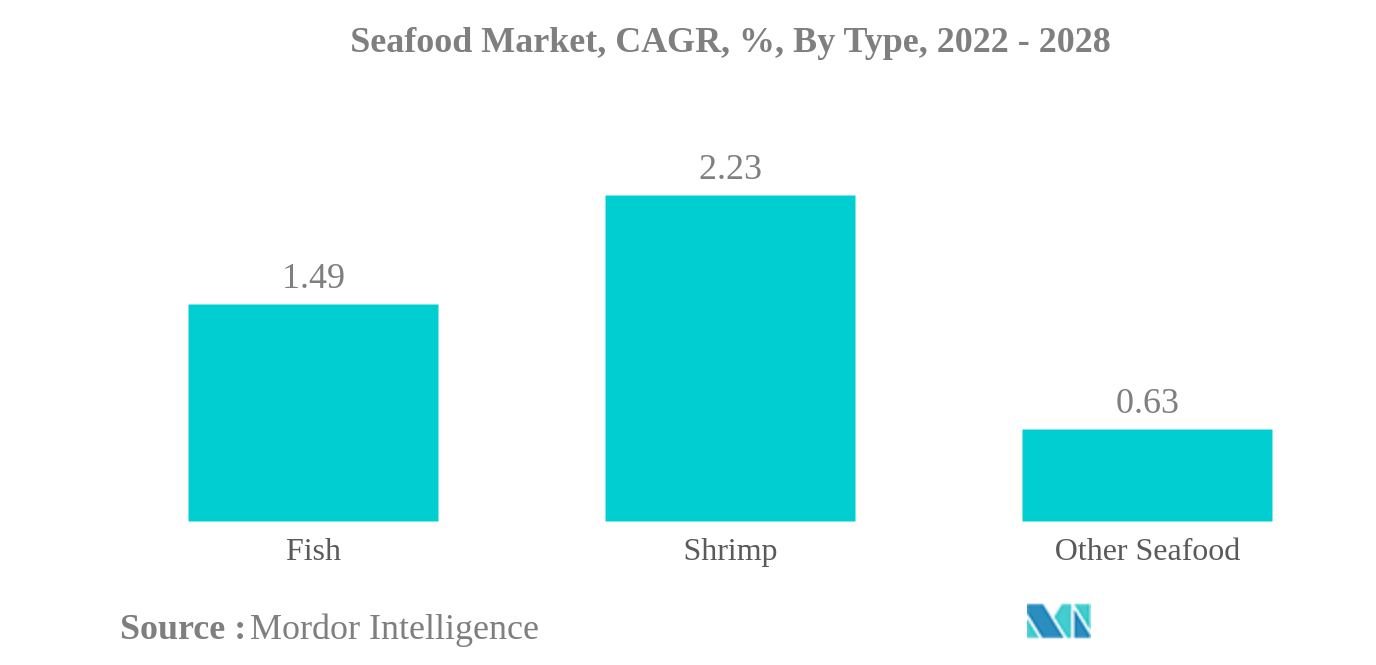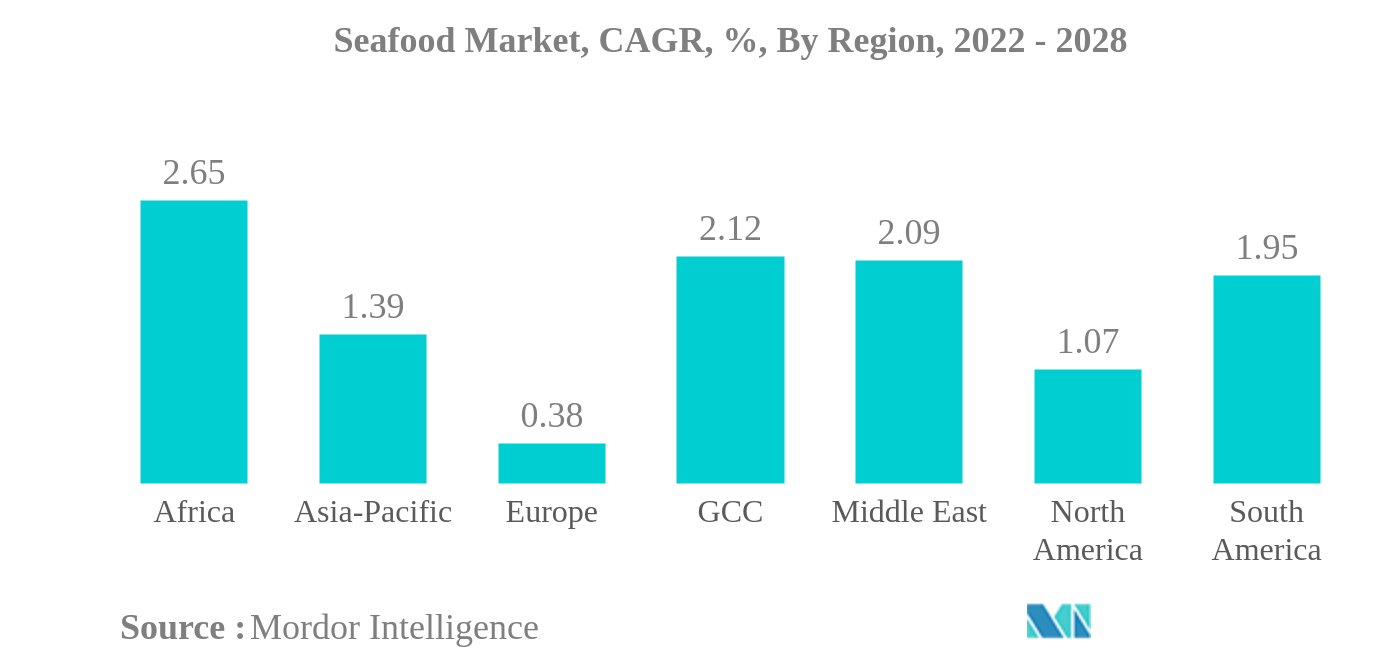Market Trends of seafood Industry
This section covers the major market trends shaping the Seafood Market according to our research experts:
Fish is the largest Type
- The global seafood market recorded a positive growth rate throughout the study period, and it is anticipated to register a 9% growth in market share from 2022 to 2028. The rising public awareness of the vital role of fish as a food group in healthy and diversified diets has driven the growth of seafood consumption over the past five decades.
- Among all the seafood types, fish has largely dominated global consumption, and it is anticipated to register a CAGR of 1.49%, by value, during the forecast period. This is largely substantiated by the growing per capita consumption of fish in many regions, accounting for nearly 70% of all the seafood types consumed. For instance, in North America, the per capita consumption of fish increased by 16.84% in 2021, almost 70% higher than any other seafood consumed in the region.
- The consumption of shrimp is projected to grow globally, and it is expected to register the fastest CAGR of 2.23%, by value, during the forecast period (2022 to 2028). Although quite small, the increase in the consumption of organic shrimp is predicted to pick up in the near future as a result of consumers becoming more socially and ecologically conscious. For instance, in 2019, 94% of people in all EU Member States felt that environmental protection was essential to them. This factor is expected to result in more than 5% growth in the per capita consumption of shrimp in the region during the forecast period.
- The other seafood segment, which includes oysters, lobsters, and other seafood types, is witnessing growing demand. However, in 2020, the impact of COVID-19 on the on-trade channel resulted in a decline in the Y-o-Y growth rate, reaching 2.81%, a reduction from the 4.51% growth registered in 2019.

Asia-Pacific is the largest Region
- The region with the most consumption of seafood in 2021 is the Asia-Pacific region. The seafood market in the region is driven by the growing aquaculture sector. China is heavily dependent on fish and shrimp farming and has made large-scale investments in the sector. In 2022, two Chinese state-owned corporations are set to complete the construction of an offshore aquaculture system with a 100,000-ton platform to be docked in the Yellow Sea.
- The fastest-growing region globally for seafood is Africa, which is projected to register a CAGR of 2.65% during the forecast period. The European market is another promising region to look out for and is projected to register a CAGR of 0.38% from 2022 to 2028. One of the largest imports of seafood in the region is tuna, more specifically, processed tuna. In 2020, processed and preserved seafood accounted for 32% of the total expenditure on seafood products in EU households, where 10% of the value came from dried, smoked, or salted seafood. On the other hand, fresh/chilled and frozen seafood amounted to roughly 48% and 20%, respectively, in the same year.
- Several countries in the Asia-Pacific region saw a drop in the consumption of shrimp during the study period, primarily due to the soaring prices of shrimp, which happened due to the low supply of shrimp in the region caused by the Early Mortality Syndrome (EMS) crisis. Countries affected by it include China, Japan, Vietnam, Thailand, Indonesia, Malaysia, and other Southeast Asian countries. Because they relied primarily on imports of shrimp from other Asian countries, Japan and Indonesia saw significant drops in consumption, with declining CAGRs of 4.38% and 1.59%, respectively, from 2016-2021.

